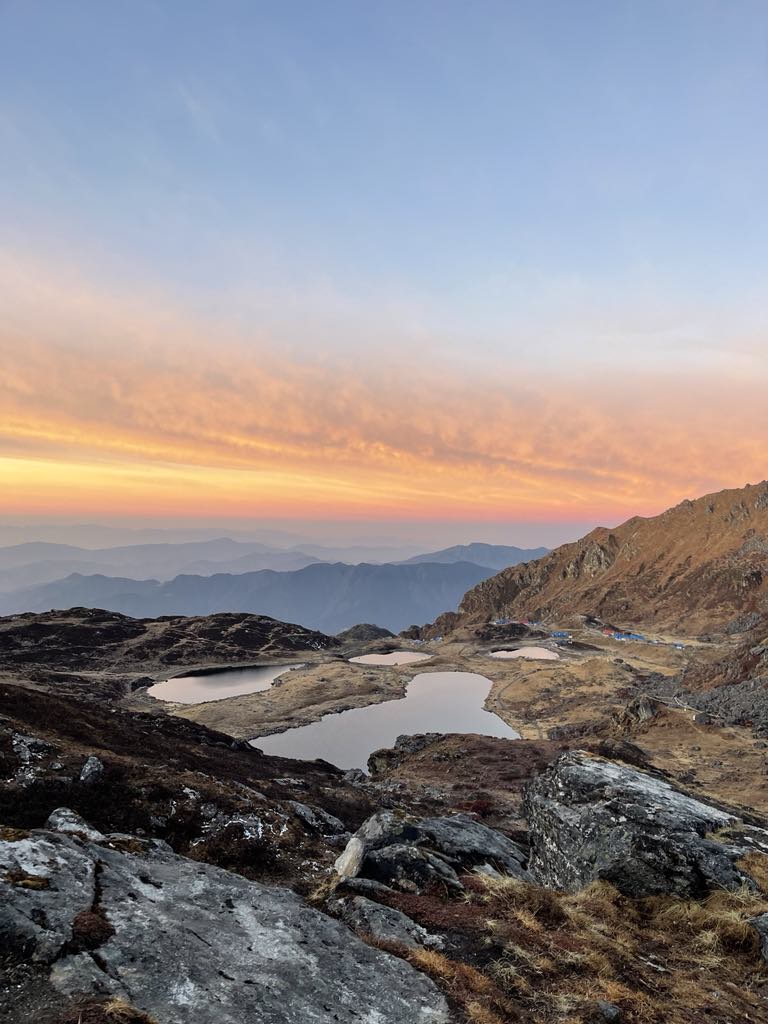
The Panchpokhari Trek is a hidden gem among Nepal's trekking routes, located in the Langtang region. It offers a spiritually and naturally enriching experience, named after the five sacred lakes (Panchpokhari) nestled amidst towering Himalayan peaks at an altitude of 4,100 meters. These lakes are not only stunningly beautiful but also hold deep cultural and religious significance for Hindu and Buddhist pilgrims alike. The journey begins with a scenic drive from Kathmandu to the Sindhupalchowk district, the gateway to this trek. The trail winds through dense rhododendron forests, terraced fields, and remote villages, offering an opportunity to connect with nature and local communities. Trekkers are greeted along the way by the warm hospitality of the Tamang and Sherpa people, who share their unique traditions, cuisines, and stories. The path gradually ascends, providing breathtaking vistas of snow-capped mountains, including Langtang Lirung, Ganesh Himal, and Dorje Lakpa.
The trek culminates at the sacred Panchpokhari lakes, a serene cluster of five glacial-fed alpine lakes surrounded by rugged mountain terrain. These lakes, a major pilgrimage site, draw hundreds of devotees during the Janai Purnima festival in August to perform rituals and bathe in the holy waters. Encircled by fluttering prayer flags, the lakes exude a surreal spiritual ambiance. From the ridge above the lakes, trekkers can enjoy panoramic views of the Himalayas, an experience that is both humbling and awe-inspiring. The trek takes you through the Panchpokhari Protected Area, home to diverse flora and fauna. Trekkers often spot animals such as Himalayan tahr, red panda, and various species of pheasants. The untouched beauty of the forests and meadows is a sanctuary for anyone seeking tranquility.
The villages along the trek provide a glimpse into the rural Himalayan lifestyle, with traditional Tamang and Sherpa settlements adorned with colorful prayer flags and ancient monasteries reflecting the region's rich cultural heritage. The locals’ friendliness and simple way of life add to the charm of the trek. The ideal time for the Panchpokhari Trek is during spring (March-May) and autumn (September-November) when stable weather, clear skies, and blooming rhododendron forests enhance the experience. However, summer offers the chance to witness the Janai Purnima festival for those seeking a cultural highlight. Unlike the crowded trails of Everest or Annapurna, Panchpokhari remains relatively untouched, providing a sense of exclusivity and peace.
Whether you're a seasoned trekker or a nature enthusiast looking for a moderate trekking experience, Panchpokhari promises an adventure filled with stunning landscapes, spiritual tranquility, and cultural richness. This trek is a true off-the-beaten-path experience that leaves an indelible mark on the hearts of those who undertake it. The journey is not only about reaching the destination but also about discovering the simplicity and beauty of life amidst the grandeur of the Himalayas.
